► Polestar 4 driven in the UK
► Rival for Porsche Macan Electric, Audi Q6 e-Tron and Tesla Model Y
► Single or dual motor, rear window not available…
You wait ages for a Polestar to come along, and then two arrive at once. Where the 3 is a large and luxurious electric SUV, the Polestar 4 challenges the smaller end of the class. Specifically, it’s the Porsche Macan Electric that the brand is targeting, a bold move.
Perhaps not as bold as the 4’s most distinctive feature – there’s no rear window at all. Instead, there’s a giant glass roof to avoid claustrophobia, and a camera-based rear-view mirror. Don’t worry it still acts as a regular mirror in case your kids suddenly go suspiciously quiet.
Two versions of the 4 will be available at launch, with a range of option packs to add plushness. If you really want to bother Porsches, there’s even an optional Performance pack to add more power, tighter suspension and plenty of gold detailing. How very Polestar…

At a glance
Pros: Pleasing interior, good range, punchy performance
Cons: Less entertaining than Macan, small boot, not enough buttons
What’s new?
Pretty much everything is new to Polestar, although much is shared with other cars in the Geely group. That includes the SEA component set that also underpins the far cheaper Volvo EX30 and Smart #1. Neither are bad cars, but they’re almost half the price of the Polestar which competes with the new all-electric Porsche Macan and Audi Q6 e-Tron on their fancy PPE platform.
What are the specs?
The 4 uses a 100kWh battery pack, 94kWh of which is usable, a 400-volt architecture (800-volt cars do exist on the SEA platform, and Polestar reckons an upgrade within the 4’s lifespan isn’t beyond the realms of possibility) and offers a fast-charging capacity of 200kW, 70kW down on the Macan.
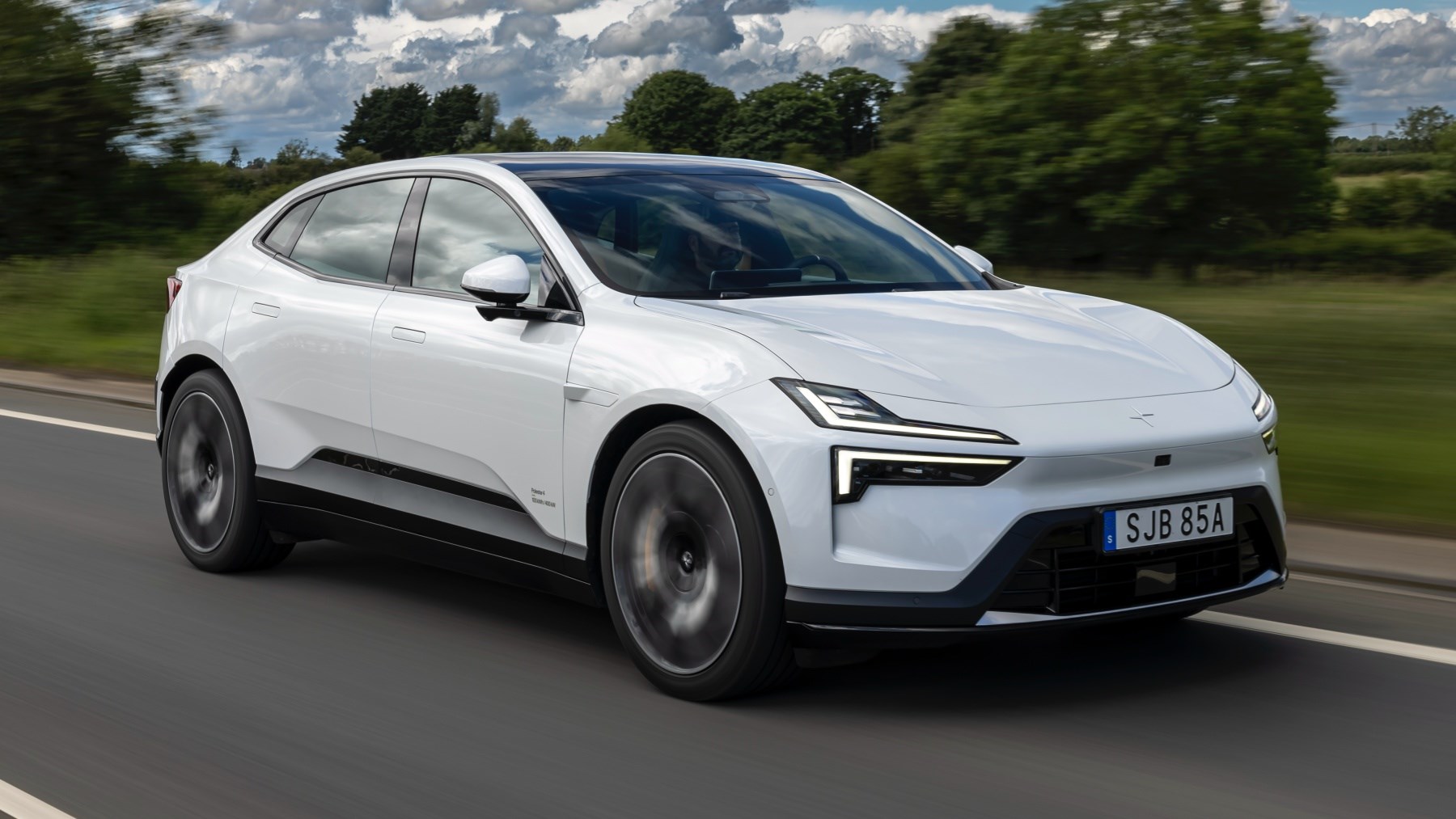
Two versions are offered. The Long range Single motor (the car for which you’ll see specs here), priced from £59,990, gets you 268bhp, 253lb ft, 0-62mph in 7.1sec and an official range figure of 379 miles. The £66,990 Long range Dual motor adds a second identical motor to the front axle to hike peak output to 536bhp and all but halve the 0-62mph time (to 3.8sec), to the detriment of the official WLTP range figure, which drops to 360 miles.
For context the new Macan Electric splits the two 4s on performance (5.2sec 0-62mph and 382bhp), with a base price – £69,800 – more expensive than both. Thanks to its rampant price cuts the Tesla Model Y Performance currently costs the same as Single motor 4 while offering the same speed as the Dual motor.
What’s it like inside?
Up front, Polestar’s trademark minimalism translates into a stylish, comfortable space with none of the cramped cosiness that plagues the compromised 2. You sit in slim sports seats, a three-spoke wheel (with a neat centre marker, tellingly) and two portrait screens, a driver’s display and a bigger, portrait-orientated touchscreen.
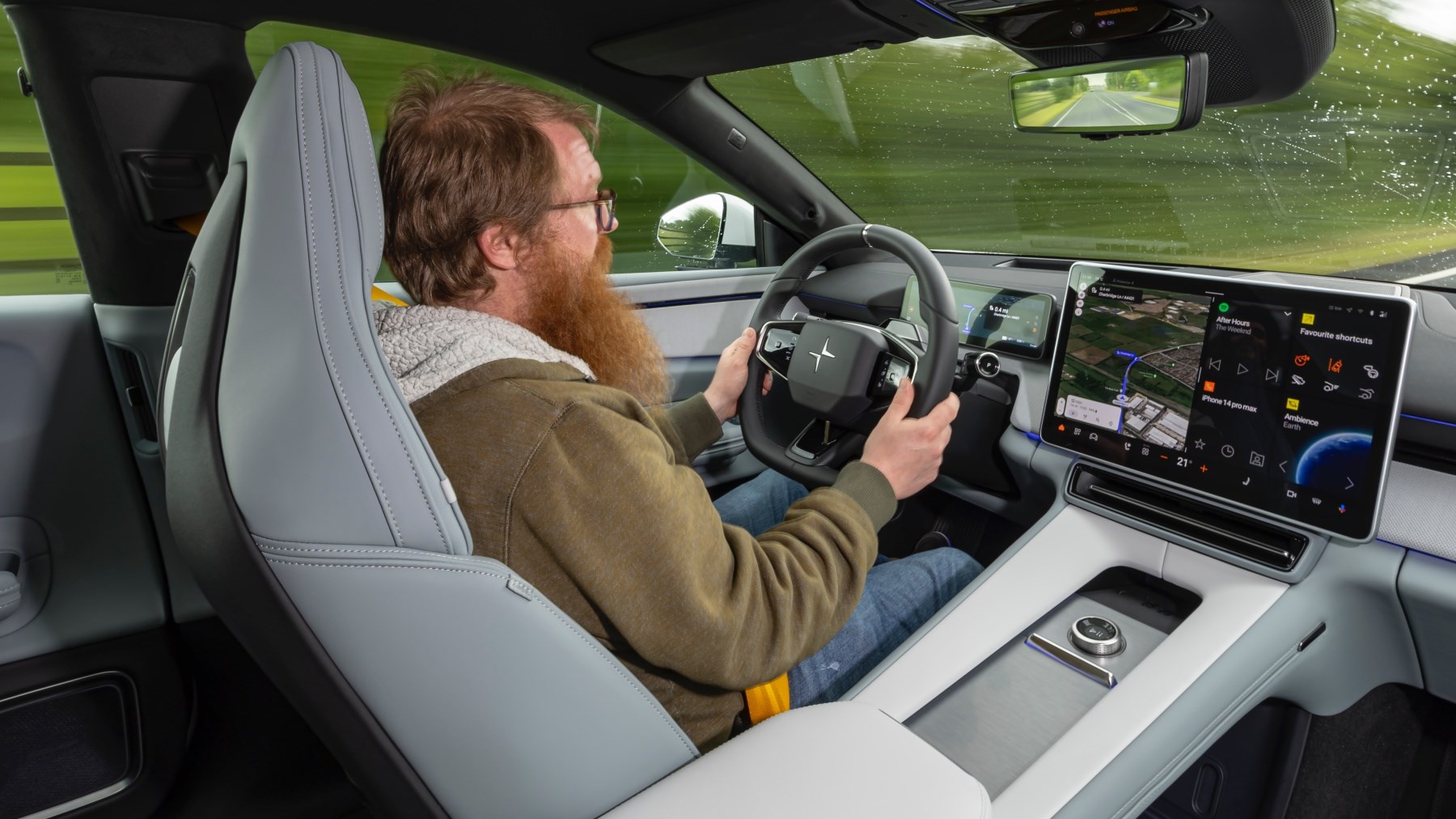
While the latter controls almost everything, there’s still a media on/off volume knob between the seats, stalks behind the wheel and there are configurable shortcut icons for functions you’ll use regularly. The infotainment system is certainly responsive and looks great, but a few more switches would make this a more user-friendly cabin.
Designer Max Missoni wanted a coupe roofline on a package that, thanks to its underfloor battery and need for decent rear-passenger headroom, didn’t lend itself to the idea. The answer was to move the header rail back, behind second-row heads rather than above them, to create decent headroom beneath the supersonic roofline. A slightly reclined seating position also helps
Climb into the back and it’s roomy in the extreme (as you’d hope given the 2999mm wheelbase and 4.84m overall length). Headroom is fine for six-footers; tighter if you’re taller. The interior design is quirky but gorgeous, with a neat wing motif that runs around the front of the cockpit and, mirrored, behind second-row occupants, making you feel snug and safe and happy.
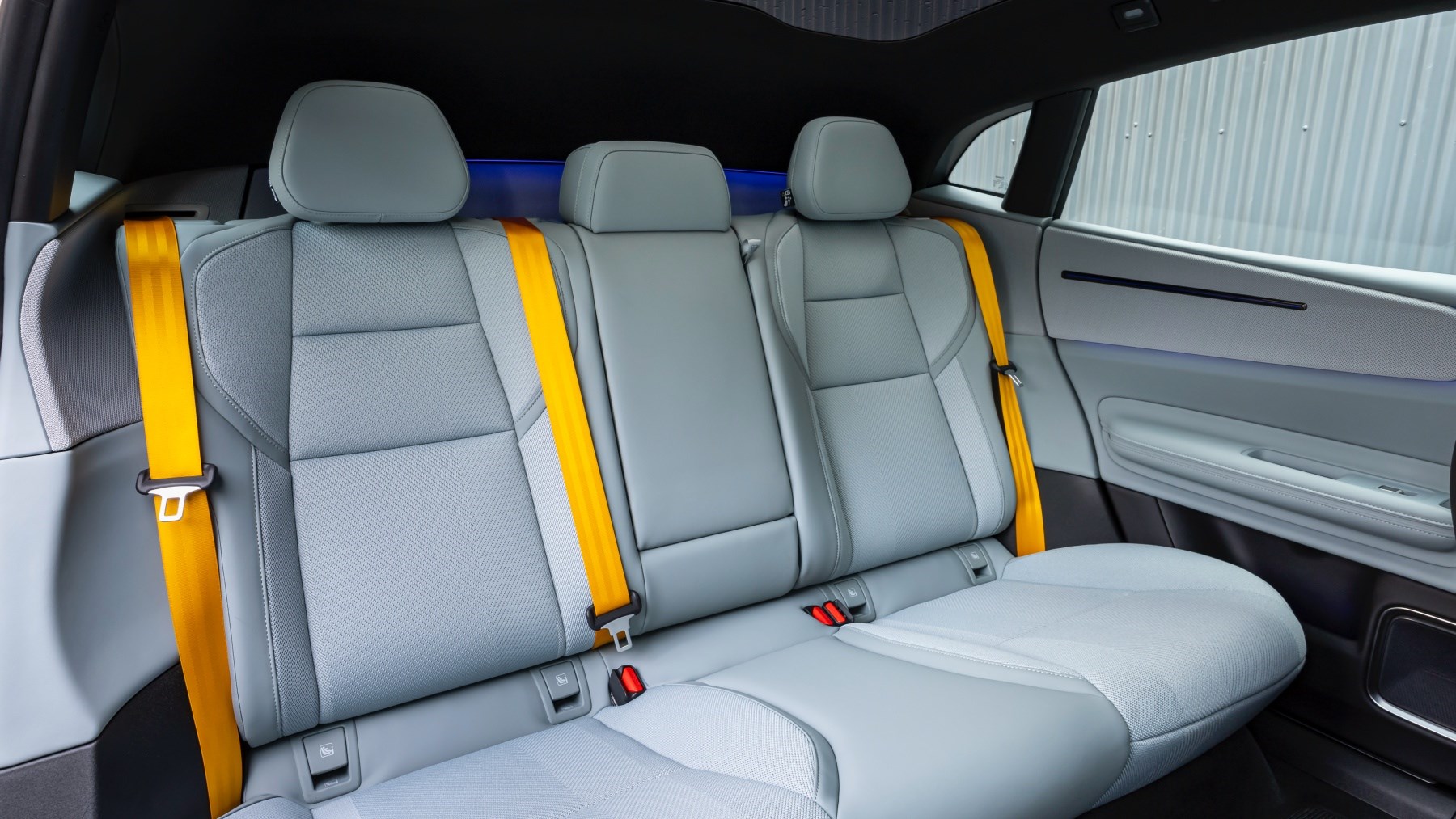
The vast panoramic roof can be optioned with electro-chromatic glass and, despite the lack of natural light from behind, there’s no sense of claustrophobia thanks to gentle ambient lighting (colour themes, inspired by the planets of the solar system, are nicely presented on the screen, complete with Polestar show car in space animation).
The 4 is the first car to use Gentex’s next-gen digital rear-view mirror, drawing a feed from a 2.5MP camera high on the trailing edge of the roof to do what a piece of reflective glass no longer can thanks to the lack of rear glazing. It works well, although I found it trickier to judge distances than a regular mirror.
How does it drive?
A prototype drive showed plenty of promise. Can the Polestar 4 deliver on UK roads? I start in the single motor, with a dual motor Performance Pack ready and waiting when I return. By the time I’ve crept away from Polestar’s UK base at Bicester Heritage and reached the gate, a few things are already clear.

The steering has heft without being heavy and responds quickly without being nervous, while the brakes blend regen and friction well. Even big names like Mercedes struggle with that. The 4 strikes a good balance between ride and handling despite relatively simple suspension, too. You’ll not find any air springs, anti-roll tech or four-wheel steering on any Polestar 4.
There is an underlying firmness to the way it deals with surface imperfections, yet it’s never jarring or uncomfortable. It’s also entirely forgivable given how good body control is and how little roll you experience. Apparently the 4’s centre of gravity is closer to the ground than the far lower Polestar 1 and I can believe it.
Numbers suggest the 4 will feel a bit sluggish compared to other EVs. The reality is that the single motor is plenty quick enough, feeling stronger once it’s rolling than the 0-62mph time would have you believe. Switch the ESC to Sport and it’s certainly enough to enjoy the rear-wheel drive layout and plentiful EV torque.
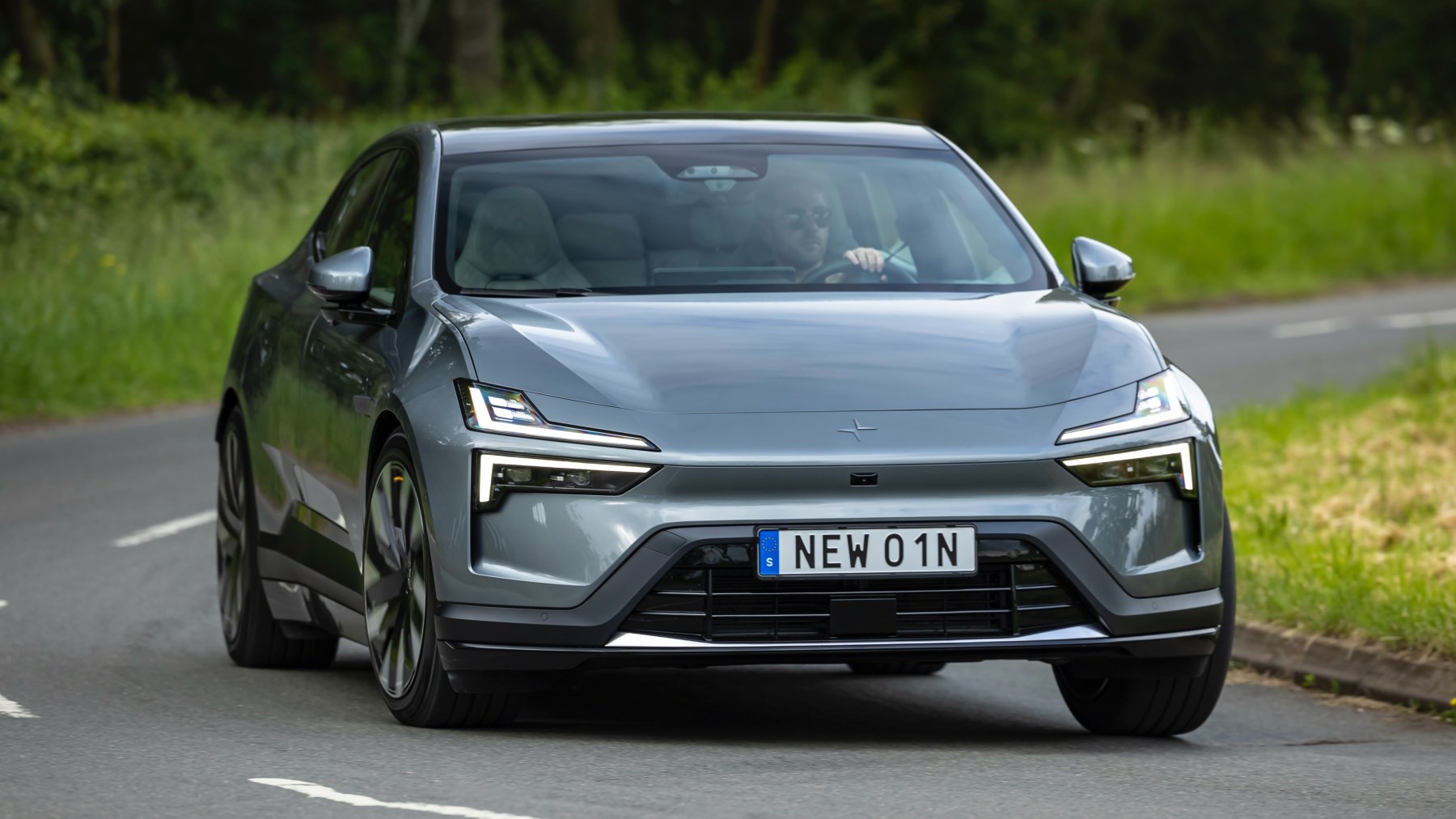
You’re very aware the ESC is there should things get too rough or sideways, but keep it smooth and fun can be had. Guiding the 4 at speed through B roads is an enjoyable experience, and while there’s not tonnes of feel filtering through the control surfaces, it’s a satisfying thing to hustle along.
Back at base it’s time for a quick coffee before I’m back out in the Performance Pack. Where the single motor felt Fiesta ST fast, the PP hits you like an RS3 on full launch control. No, it’s not as rapid as a Macan Turbo or other e-SUVs we could mention, but it’s not often you can fully uncork it, and even then not for long.
Unlike Polestar’s Performance Packs of old that require spanners to adjust the ride quality, the 4 gets ‘Active’ dampers. They are able to constantly adjust damping force and their stiffness can be adjusted via the infotainment, with the supplest mode no tougher than the regular single motor.
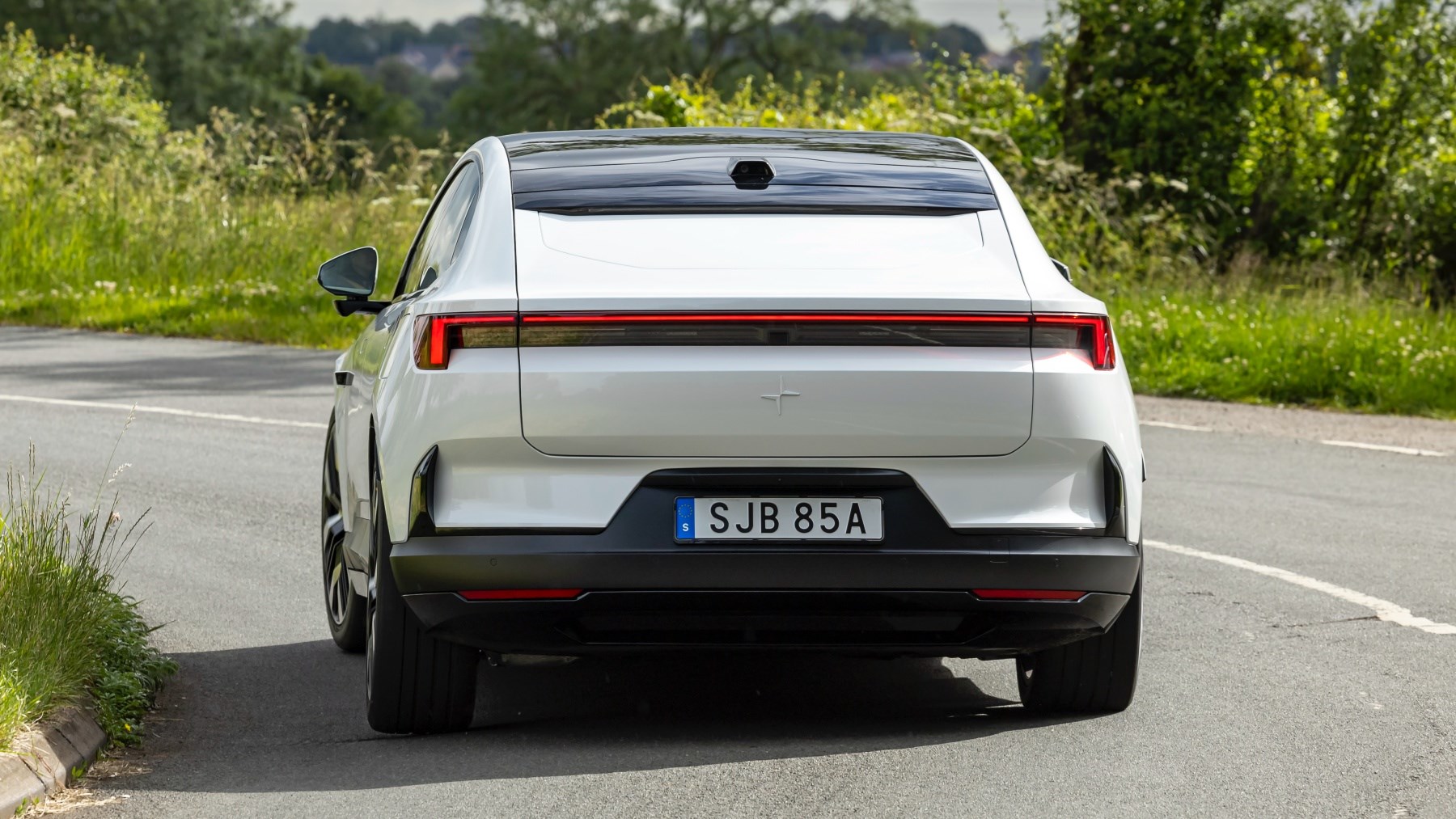
The mid setting provides slightly brighter responses with full firm still usable on the road. Grip levels are higher and roll angles lower, but it feels a little more two-dimensional than the single motor. The dual motors are most interested in keeping things locked down and neutral, with none of the playfulness of a Macan Turbo. It’s an effective point-to-point machine, if not a very thrilling one.
Polestar 4: verdict
There’s no doubt the Polestar 4 is the best utilisation of Geely’s SEA platform. Its pleasing dynamics and welcoming interior make it an appealing entry into the premium SUV class whether you like the windowless rear or not.
However, where the Macan Turbo is undoubtedly a better driver’s car than the base model, we’re not so sure here. As fast and capable as the dual motor Performance Pack is, I had more fun at a lower speed in the single motor.
Strange? Not at all; it’s been the case with every SEA-platformed car I’ve driven. Polestar has done impressive things with a fairly simple recipe and a few handpicked ingredients. Unfortunately, Porsche’s cookbook is thicker and its fridge better stocked.